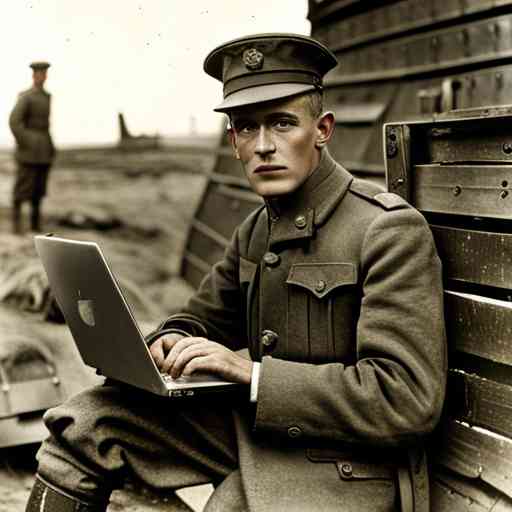Technological Arms Race: Phase Transitions and Technological Capabilities
 Throughout history, major conflicts and wars have often been attributed to political tensions and ideological differences. However, a compelling perspective emerges when we delve into the intertwined relationship between warfare and technological advancements. To this end, it becomes apparent that the onset of several major wars can be understood as responses to transformative technological capabilities. From analog computers to artificial intelligence and Deepfake technology, the evolution of warfare has been profoundly influenced by these paradigm shifts.
Throughout history, major conflicts and wars have often been attributed to political tensions and ideological differences. However, a compelling perspective emerges when we delve into the intertwined relationship between warfare and technological advancements. To this end, it becomes apparent that the onset of several major wars can be understood as responses to transformative technological capabilities. From analog computers to artificial intelligence and Deepfake technology, the evolution of warfare has been profoundly influenced by these paradigm shifts.
World War I: The Dawn of Analog Computers
The outbreak of World War I marked a turning point in human history, coinciding with the rise of analog computers. These mechanical devices, capable of performing complex calculations, revolutionized the fields of science and engineering. However, their impact extended beyond academia. Nations recognized the strategic advantage of analog computers in coordinating artillery fire, predicting trajectories, and optimizing military logistics. Consequently, the race to develop and exploit analog computers played a significant role in shaping the nature and tactics of warfare during this era.
World War II: The Rise of Digital Computers
The aftermath of World War I saw the emergence of digital computers, which marked another phase transition in technological capabilities. These electronic machines could process information at incredible speeds and perform complex computations with greater precision. As the world plunged into World War II, digital computers played a pivotal role in code-breaking, cryptanalysis, and military operations. The infamous Enigma machine, cracked by Alan Turing and his team at Bletchley Park, exemplified the profound impact of digital computing on the outcome of the war.
The Cold War: High-Level Software, Languages, and Databases
The post-World War II era witnessed the intense rivalry between the United States and the Soviet Union, known as the Cold War. During this period, the development of high-level software languages and sophisticated databases became paramount. These tools enabled the efficient management of vast amounts of data, enhanced communication, and facilitated strategic decision-making. The race for dominance in software and database technologies became an integral part of the Cold War conflict, shaping intelligence gathering, surveillance systems, and military operations.
The Gulf War: Digital Video Editing Computers
The Gulf War of 1990-1991 marked yet another phase transition driven by technological advancements. This conflict saw the rapid integration of digital video editing computers into military operations. These powerful tools allowed for real-time analysis and dissemination of visual information, facilitating more efficient decision-making and providing unprecedented media coverage of the war. The impact of digital video editing technology on shaping public perception and influencing military strategies cannot be understated.
Modern Conflict: Artificial Intelligence and Deepfake Technology
As we step into the modern era, the ongoing conflicts we witness today are increasingly influenced by artificial intelligence (AI) and Deepfake technology. AI algorithms enable faster data analysis, enhanced surveillance, and autonomous decision-making in warfare. Furthermore, the emergence of Deepfake technology has raised concerns about information warfare, as it allows for the creation of realistic yet fabricated media content. Deepfake technology has the potential to manipulate public opinion, destabilize trust, and influence political landscapes, making it a potent tool in modern conflicts.
While politics and ideology undoubtedly play crucial roles in major wars, understanding the underlying phase transitions in technological capabilities provides a fresh perspective on the dynamics of warfare. From the rise of analog and digital computers to high-level software, languages, and databases, and the advent of artificial intelligence and Deepfake technology, each phase transition has reshaped the nature of conflicts. By recognizing and adapting to these technological advancements, nations can navigate the ever-changing landscape of warfare more effectively and ethically.